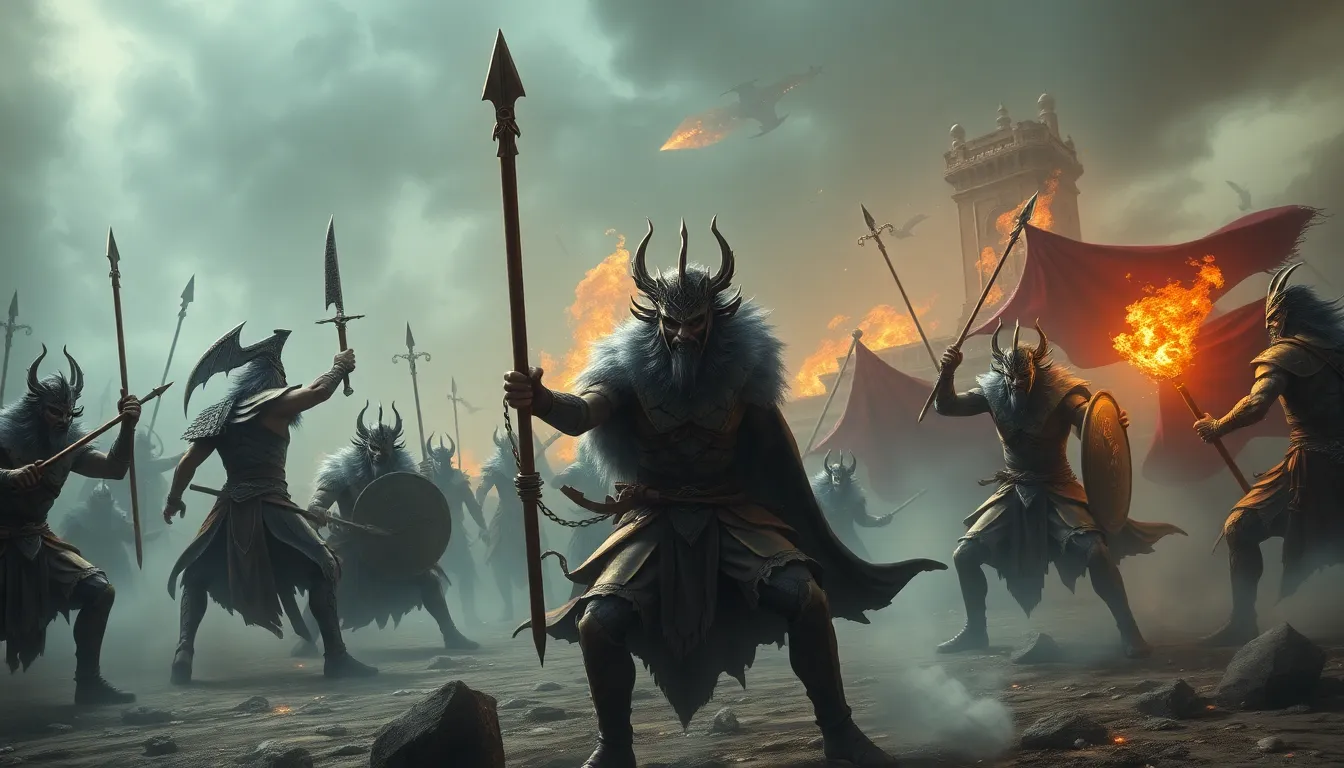The Myth of the Maize God: Life, Death, and Rebirth
1. Introduction
The myth of the Maize God is a powerful and enduring narrative present in various cultures worldwide, particularly in agricultural societies. This myth holds significance beyond its storytelling aspect, reflecting deep-rooted beliefs about life, death, and rebirth, intertwined with the cycle of agricultural practices.
The Maize God, often embodied in different deities across cultures, represents the life-giving power of maize, a staple food source for many civilizations. Through the myth, people sought to understand the mysteries of nature, the origin of their sustenance, and the cyclical patterns of life and death observed in the natural world, particularly in the planting and harvesting of crops.
2. Origins of the Myth
The geographical and historical origins of the Maize God myth are diverse, with variations appearing in cultures across Mesoamerica, North America, South America, and even parts of Asia and Africa. The specific cultural contexts and environmental conditions influenced the unique characteristics of the myth in each region.
In Mesoamerica, the myth of the Maize God played a central role in the religious and cultural beliefs of civilizations like the Mayans, Aztecs, and Incas. The veneration of maize as a divine gift and the Maize God as its embodiment reflected the profound dependence of these societies on agriculture. Similarly, in North America, various indigenous tribes held maize in high regard and developed myths surrounding its origins and the deity associated with it.
3. The Maize God in Mesoamerican Culture
Within Mesoamerican cultures, the Maize God occupied a prominent position in their mythology. Different cultures developed their own interpretations and representations of the deity. For instance, the Mayans worshipped a Maize God known as Hun Hunahpu, while the Aztecs revered Cinteotl as the embodiment of maize. These deities were often depicted as youthful figures, symbolizing the regenerative power of the grain and its association with fertility.
4. Life, Death, and Rebirth Cycle
The myth of the Maize God revolves around a central theme: the cycle of life, death, and rebirth. The deity's journey often mirrors the agricultural cycle, with the planting of seeds representing birth, the growth and maturity of the plant symbolizing life, and the harvesting and eventual consumption of the grain signifying death and sacrifice. This cycle underscores the interconnectedness of life and death, highlighting the dependence of human sustenance on the sacrifice of the Maize God.
The symbolism associated with each stage of the cycle further reinforces its meaning. The planting of seeds represents the potential for new life and the promise of future nourishment. The growth of the maize plant symbolizes the life-giving power of the earth and the nurturing role of the sun and rain. The harvesting and consumption of the grain represent the sacrifice of the Maize God for the sustenance of humanity, emphasizing the cyclical nature of life and the interconnectedness of all living beings.
6. Rituals and Ceremonies
The veneration of the Maize God was deeply ingrained in the ritual practices of various cultures. These rituals served as a means of expressing gratitude for the life-giving power of maize, seeking divine favor for bountiful harvests, and ensuring the continuation of the agricultural cycle.
One prominent example is the Aztec festival of Huey Tozoztli, dedicated to Cinteotl, the Maize God. This elaborate ceremony involved offerings of food, sacrifices, and ritual dances. Another notable ritual is the Mayan maize planting ceremony, where offerings were made to the Maize God to ensure a successful harvest. These rituals reinforced the interconnectedness between the myth of the Maize God, agricultural practices, and the spiritual beliefs of these societies.
7. Artistic Representations
The Maize God's influence extended beyond rituals and ceremonies, manifesting in various forms of artistic expression. Across cultures, the Maize God was depicted in sculptures, paintings, and architecture, serving as a visual representation of the deity's significance and the myth's central themes.
In Mesoamerica, numerous sculptures and murals depicted the Maize God in various forms, often adorned with symbols of fertility and regeneration. Similarly, in North American indigenous art, the Maize God was often represented in masks, pottery, and petroglyphs, reflecting the deep connection between the deity and the natural world. These artistic representations served as a means of transmitting the myth's wisdom and symbolism across generations.
8. The Maize God in Contemporary Culture
The legacy of the Maize God myth continues to resonate in contemporary society, albeit in transformed ways. The myth's influence can be observed in various forms of modern cultural expression.
In literature, the Maize God's narrative has inspired numerous authors, including Nobel laureate Miguel Angel Asturias, who drew upon Mayan mythology in his novel, "Men of Maize." Similarly, in art, contemporary artists continue to explore the symbolism and themes associated with the Maize God, reinterpreting the myth for modern audiences.
Furthermore, the Maize God's influence is evident in popular culture, with references to the myth appearing in films, television shows, and video games. These contemporary reinterpretations demonstrate the enduring power of the Maize God myth and its relevance to modern audiences.
9. Theories and.
The myth of the Maize God has captivated scholars and researchers across various disciplines, inspiring numerous theories and interpretations. Anthropologists have explored the myth's role in shaping social structures and cultural beliefs. Psychologists have analyzed the myth's symbolism and its connection to human psychology. Meanwhile, literary critics have examined the narrative's structure and its literary significance.
These diverse perspectives have enriched our understanding of the myth, highlighting its multifaceted nature and its enduring influence on human thought and creativity. The ongoing exploration of the Maize God myth continues to shed light on its profound impact on various cultures and its relevance to contemporary society.
FAQ
Q: What is the significance of the Maize God myth?
A: The Maize God myth holds significance in various aspects, including:
- Understanding the origins of agriculture and maize cultivation.
- Explaining the cyclical patterns of life, death, and rebirth observed in nature.
- Reflecting cultural values and beliefs related to sacrifice, regeneration, and fertility.
- Providing a framework for ritual practices and artistic expression.
Q: In which cultures was the Maize God myth prevalent?
A: The Maize God myth was prominent in various cultures worldwide, including:
- Mesoamerica (Mayans, Aztecs, Incas)
- North America (various indigenous tribes)
- South America (certain Andean cultures)
- Parts of Asia and Africa
Q: How is the Maize God myth represented in art?
A: The Maize God is depicted in various artistic mediums, including:
- Sculptures
- Paintings
- Murals
- Masks
- Pottery
- Petroglyphs
- Architecture
Q: How does the Maize God myth influence contemporary culture?
A: The Maize God myth continues to inspire contemporary cultural expression in various forms, including:
- Literature
- Art
- Popular culture (films, television, video games)
Q: Why is the Maize God myth still relevant today?
A: The Maize God myth remains relevant because it addresses universal themes of life, death, and rebirth, which continue to resonate with audiences today. Additionally, the myth's connection to agriculture and the natural world holds significance in an era of increasing environmental concerns.



